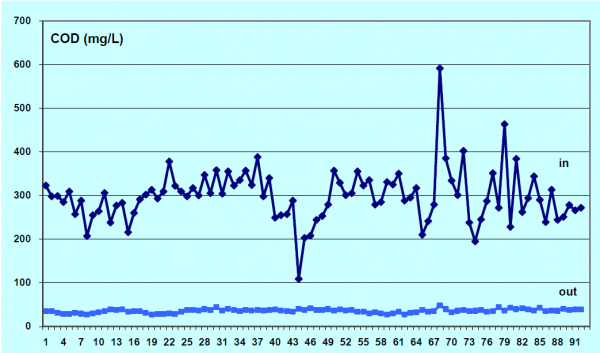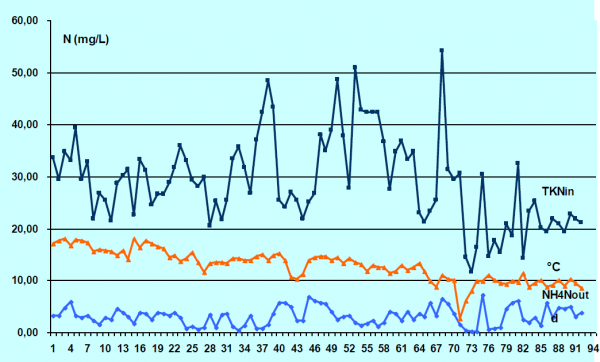Application of a large WWTP NINGAN
Wastewater treatment plant in NINGAN
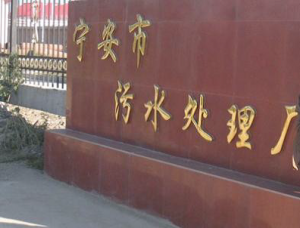 Ningan is a city with 440 000 inhabitants, which is situated approximately 20 km south of Mudanjiang in Chinese province Heilongjiang. Cold climate is typical of this region. Thanks to positive experience with LEVAPOR biotechnology applied in fluid reactors in Finland, we decided to use the technology in new municipal WWTP in Ningan. We suggested the capacity of 22 000 m3/d sewage water at the inflow.
Ningan is a city with 440 000 inhabitants, which is situated approximately 20 km south of Mudanjiang in Chinese province Heilongjiang. Cold climate is typical of this region. Thanks to positive experience with LEVAPOR biotechnology applied in fluid reactors in Finland, we decided to use the technology in new municipal WWTP in Ningan. We suggested the capacity of 22 000 m3/d sewage water at the inflow.
Based on previous experience, the WWTP with activation capacity 3 200 m3, filled with square LEVAPOR carriers (20x20x7 mm), and total capacity 480 m3 (15 capacity % of activation) was designed. Operation of the WWTP, which was constructed by company called Harbin Baishenglubin Environmental Technology Co.Ltd, was initiated in October 2010 (winter season). Despite winter weather conditions, the implementation of the WWTP was done perfectly well and the WWTP quickly reached suggested outflow requirement for CHOD. Reaching nitrification took longer time due to low growth speed of nitrification bacteria.
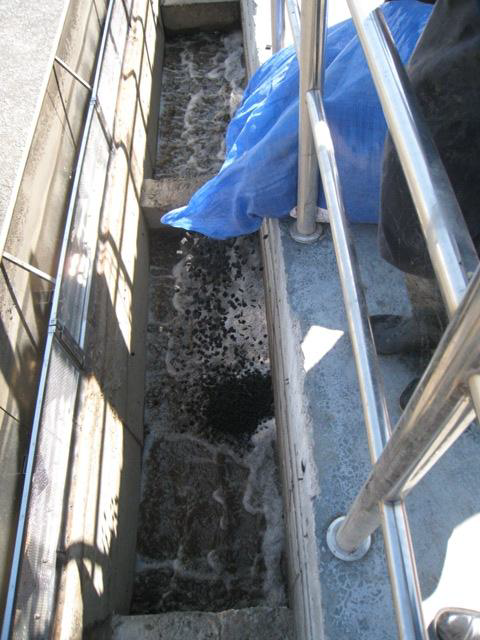
Obr. 2: Reactor loading
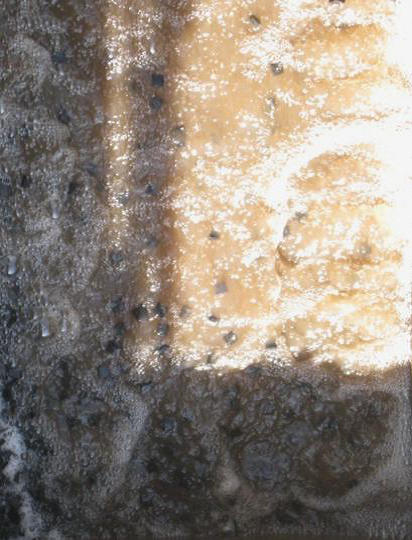
Obr. 3: Fluidised LEVAPOR carriers
WWTP specifications
Outflow parameters reached in the period from October to December 2013 are shown in the chart 1 and 2 and picture 4-5.
| Specifications | Dimension | Value |
|---|---|---|
| Capacity of reactors | m3 | 3200 (4x800) |
| Capacity of LEVAPOR carriers | m3 | 480 (15%) |
| Holding time | h | 3,5 - 3,8 |
| 2012 | OCTOBER | NOVEMBER | DECEMBER | ||
|---|---|---|---|---|---|
| CHOD | inflow | mg/l | 294 | 295 | 306 |
| outflow | mg/l | 33,7 | 35,8 | 37,7 | |
| BOD55 | outflow | mg/l | 11,9 | 12,9 | 12,9 |
| TN | inflow | mg/l | 28,8 | 35,3 | 23,2 |
| outflow | mg/l | 12,5 | 14,8 | 11,0 | |
| Namon | outflow | mg/l | 2,0 | 3,2 | 3,34 |
| Temperature OW | °C | 15,6 | 13,3 | 9,6 |
Chart. 1 and 2: Technical data and outflow parameters of WWTP Ningan in the period from October to December 2012.
Picture 4: CHOD removal in the period from October to December 2012.
Obr. 5: Nitrogen removal in the process of decreasing temperature of sewage water in the period from October to December 2012. Dark blue – TN in inflow (not TKN!!!); light blue – Namon at the outflow; orange – temperature of sewage water.
Conclusion:
1) Despite decreasing temperatures and exceptionally short holding time in activation (3,5 – 3,8 hour instead of usual 6 – 10 hours), the WWTP reached excellent results, outflow concentration of CHOD approx. 33 – 38 mg/l (88 – 89%) and outflow concentration of Namon approx. 2 – 3,3 mg/l (91 – 93%). Therefore, all legislation requirements were fully conformed.
2) Despite considerable fluctuation at the inflow concentrations of CHOD and TN, the WWTP reached steady outflow values without discernible negative effect of decreasing temperatures, which confirms our previous experience.
3) The results confirmed advantages of biofilm technology and showed, that application of LEVAPOR carriers provides a long-term solution with exceptionally low acquisition and operational costs.
The published information is based on experience with application of LEVAPOR carriers. Guarantee of required efficiency can be given only after individual assessment of particular applications considering given emission limits and in some cases the guarantee can be given only after carrying out of particular pilot experiments.


